The Dragon Slayer. By Jaime Hernandez. TOON, 2018. Hardcover: ISBN 978-1943145287, $16.95. Softcover: ISBN 978-1943145294, $9.99. 40 pages. A Junior Library Guild Selection.Jaime Hernandez, one of the world's great cartoonists, is as lively and influential a comic book artist as you could hope to find. He has changed many readers' and artists' lives. His work on the Love and Rockets series (1981-now), in tandem with his brothers Mario and especially Gilbert Hernandez, proved that there was life and juice and relevance in the serial comics magazine, beyond even what many fans of the medium had dared hope. The punk, Latinx, and queer-positive aesthetic of L&R, along with its serious, in-depth storytelling and formal risk-taking, made for a revolution in comics, and Jaime Hernandez has deservedly been called one of the masters of the medium. The Dragon Slayer is not his first comic for children, as he's done a few short pieces for children's anthologies. Nor is it his first comic based on folklore: seek out for example "La Blanca," his version of a ghost story he heard from his mother, which he did for Gilbert's all-ages anthology Measles No. 2 back in 1999 (Gilbert too has made folk and family lore into comics: dig his "La Llorona," from New Love No. 5, back in 1997). Moreover, children and childhood memories are essential to Jaime's work in Love and Rockets. But The Dragon Slayer is Jaime's first real children's book. I have kid [characters] in my adult comics, but they play by my rules. Now that I’m writing for children, I’m playing by their rules. I was a little nervous because now I’m speaking directly to kids and to the parents who will let them read [the book]. So Dragon Slayer is something new for him. In fact it's a quiet collaboration: the book's back matter tells us that Hernandez read through many folktales to find the three that he wanted to adapt, and in this he was commissioned and helped by TOON's editorial director and the book's designer, Françoise Mouly. Mouly's team also deserves mention: in this case, designer Genevieve Bormes, who supplied Aztec and Maya design motifs that enliven the book's endpapers and peritexts, and editor, research assistant, and colorist Ala Lee. Like most books in the TOON Graphics line, Dragon Slayer includes some discreet educational apparatus, in the form of notes and bibliography -- more teamwork. Further, the book comes introduced by prolific scholar and children's author F. Isabel Campoy, whose collaborative book with children's author and teacher educator Alma Flor Ada, Tales Our Abuelitas Told: A Hispanic Folktale Collection (2006), is credited as one of Hernandez's sources. Campoy and Ada are key contributors here. (Another key source, albeit not as clearly announced, is John Bierhorst's 2002 collection Latin American Folktales.) All this is by way of packaging three 10-page comics by Hernandez, which are a delight, and are over too soon. I could read book after book like this from Hernandez -- the premise fits him beautifully. Hernandez has said that he liked the "wackiness" of these stories, and they do have that absurd-but-perfect, unquestionable quality of many folk tales: a sense of symbolic rightness and fated, almost-inevitable form in spite of the seeming craziness of their plots. Things happen that are preposterous and unexplained but just seem to fit, to click, because of the tales' use of repetition, parallels, rhythmic phrasing, and ritual challenges: stock ingredients, in anything but stock form. These folkloric patterns make the tales complete and rounded no matter how nonsensical they might appear at first. In crisp pages that rarely depart from a standard six-panel grid, Hernandez delivers the stories straight up, without any rationalizing or ironic distance, in clean, classic cartooning that communicates without breaking a sweat. Jaime is a master of seemingly guileless and transparent, but in fact subtle and artful, narrative drawing, and The Dragon Slayer does not disappoint. This has been billed as a "graphic novel," but it's no more a novel than other splendid TOON books like Birdsong, Flop to the Top, The Shark King, or Lost in NYC. What it is is a charming comic book that whets the appetite for more. Hernandez's cartooning benefits from the book's folkloric and scholarly teamwork, but the main thing is that the comics are marvelous. The title story, a feminist fairy tale with a light touch, focuses on an unfairly disowned youngest daughter who slays monsters and solves problems: a real pip. "Martina Martínez and Pérez the Mouse" (adapted from Ada's text) is an absurd story of marriage between a woman and a mouse, until it becomes a wise fable about panic and grief. "Tup and the Ants" is a lazy-son story in which the (again) youngest child proves his mettle with the help of a hill's worth of hard-working ants. All three comics surprised me and made me laugh out loud. I could call the book an anthology of lovely moments. It suffers no shortage of arresting moments -- panels that leap out: But what really makes these panels lovely is that there is no grandstanding in the art, only a terrific economy in visual storytelling: a streamlined delivery that carries us far, fast. Context is everything, and the book is not so much excerptable as endlessly readable. In short, The Dragon Slayer is a great book for Jaime Hernandez and for TOON, and one of the best folktale and fairy tale-based comics I've seen. I confess myself puzzled by its labeling as a TOON Graphic, which in the TOON system implies an older, more experienced comics reader, as opposed to TOON's Level 1, 2, and 3 books for beginning or emerging readers (I don't see this as a more complex comics-reading experience than, say, some of the Level 3 titles). But I do appreciate the oversized (7¾ x 10 inch) TOON Graphics format, which gives Hernandez a larger space to work in, more like that of a comics magazine. That suits his drawing and pacing. In any case, The Dragon Slayer is a sweet, short burst of smart, loving comics, and comes highly recommended. PS. A Spanish-language edition, La Matadragones: Cuentos de Latinoamérica, is also available in both hardcover (ISBN 978-1943145300) and softcover (ISBN 978-1943145317), priced as above. TOON provided a review copy of this book, in its English-language version.
0 Comments
Your comment will be posted after it is approved.
Leave a Reply. |
Archives
June 2024
|

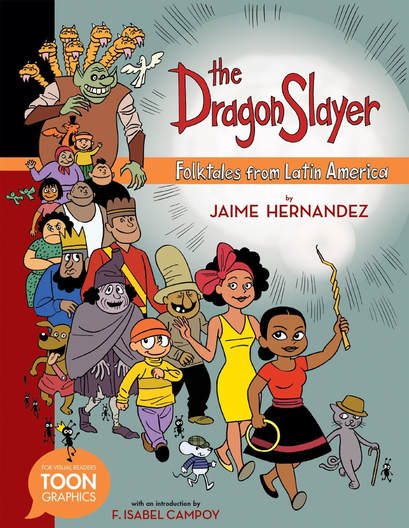
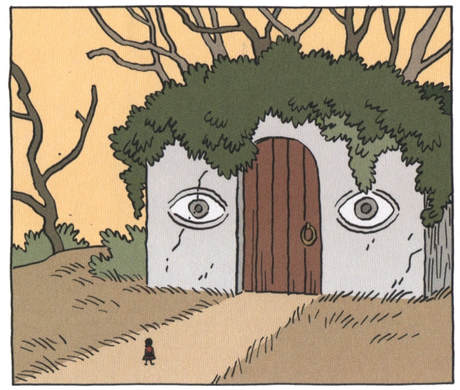
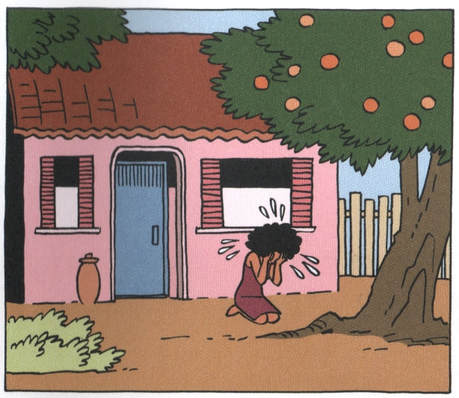
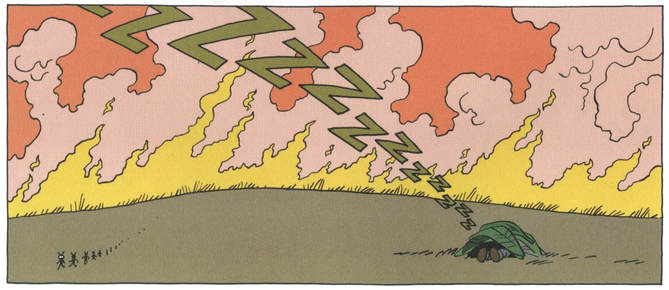
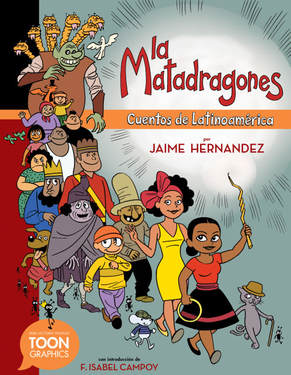
 RSS Feed
RSS Feed
